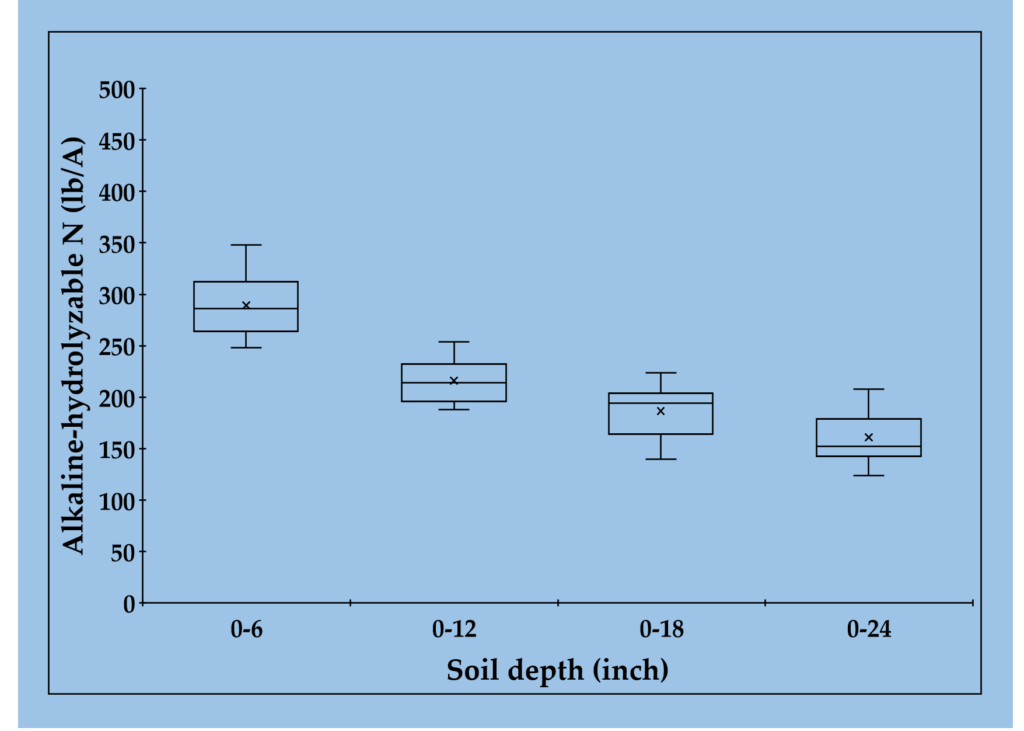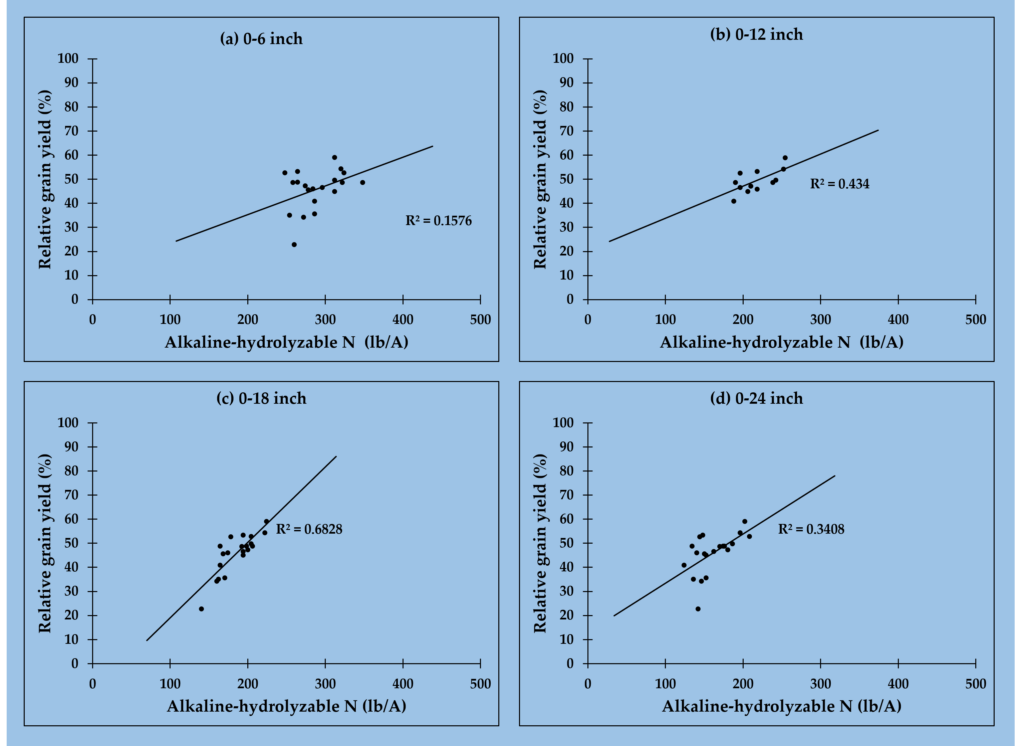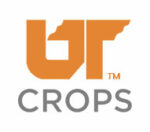Predicting Corn Nitrogen Response to Mineralizable N in Tennessee using Alkaline Mineralizable-N
Research was funded by Southern SARE
Nutifafa Adotey, Assistant Professor & Soil and Nutr. Magt Specialist Xinhua (Frank) Yin, Professor & Cropping System Scientist, University of Tennessee, and Ryan Blair, Extension Area Specialist III and County Standardized Trials Specialist
Introduction
Most of the soil nitrogen (N) is present in organic form, especially in the top 6 inches (75 – 95%), which is not readily available for plant uptake. Only about 0.1 – 0.3% is in inorganic or bioavailable forms such as nitrate and ammonium that plants can utilize. So, organic soil N is converted to inorganic forms for plants use, a process referred to as mineralization. The fraction of organic soil N that can be converted to inorganic form is referred to as potentially mineralizable N. Several factors including soil, previous crop, weather, and nitrogen management determine the extent of N mineralized. Nitrogen rate trials (>30) conducted over the past five years in West and Central TN suggested that mineralized soil N can contribute more than 20% of the total crop N requirements.
A number of tests have been proposed and evaluated to estimate potentially mineralizable N as a means to determine whether crops would respond to applied fertilizer. The most common tests are the Illinois Soil Nitrogen Test (ISNT) and the direct steam distillation (DSD). Both tests measure the alkaline-hydrolyzable N in the soil to predict N response. The ISNT was developed in the early 2000 and had undergone several modifications over the years. Several studies have been conducted to predict N fertilizer needs using ISNT in North central and Northeastern regions of the United States. However, there are discrepancies in the results. Instances where ISNT tests did not predict N response, some scientists reported that the ISNT was measuring a constant fraction of the soil rather than the readily mineralizable N component. Others attributed the poor performance of ISNT to the high levels of hydrolyzable ammonium relative to amino sugar. Soil samples used in some of these studies were from 0-6-inch depth. The DSD, which was developed in late 2000 is similar to ISNT but uses a steam distillation technique. The DSD was shown to predict N crop response and it is used for fertilizer N recommendation for rice in Arkansas.
Current N fertilizer recommendation for corn in Tennessee is based on realistic yield goals, which does not account for potentially mineralizable N that is available for the plant. Currently, adjustments to fertilizer N can only be made for corn grown on field receiving manure by using the Pre-Sidedress Nitrate Test (PSNT). A crop response to mineralizable N may help develop a site-specific N fertilizer recommendation tool for corn, thus improving the efficiency of fertilizer N application. The objectives of the on-farm trials include: (1) evaluating the relationship alkaline mineralizable N to corn response.
Research Methodology
Replicated trials were conducted in west and central Tennessee to evaluate DSD’s alkaline-hydrolyzable N to corn N response. The nitrogen fertilizer rates, which varied across trial locations ranged from 0 to 300 lb N ac-1. At planting, 60 lb N/acre was applied as ANVOL®-treated urea while the remaining N was sidedress at the V6 stage corn. Soil samples were collected from the 0 lb N ac-1 plots at different depths (0-6, 0-12, 0-18, and 0-24-inch depth) prior to sidedress N application. A linear model was used to correlate the yield of the No N (check) plants to mineralizable N at 4 soil depths.
Findings
The alkaline-hydrolyzable N for 0-6, 0-12, 0-18, and 0-24-depth ranged from 248 – 348, 188 – 254, 140 – 224, and 124 – 208 lb/A, respectively. These values are within the ranges reported by Scientists in the Southern U.S. Significant differences in average mineralizable N were observed among soil depth, with the highest amount (289 lb/A) at the 0-6-inch and decreased with depth (Figure 1). All the N trials showed a positive linear response to N fertilizer application. Grain yield of the check plots ranged from 50 to 131 bu per acre, with the relative grain yield values ranging from 23 to 59% of the maximum yield at each trial location. A significant and positive linear relationship was observed between the check plot yield and alkaline-hydrolyzable N for all depths, with the best predictive relationship occurring at the 0-18-inch depth (R2 = 0.682) (Figure 2). This suggests that mineralizable-N at soil 0-18 has substantial influence on the predictability of crop response to N fertilizer, which aligns with previous studies.


Conclusion
Overall, the work suggests that alkaline-hydrolyzable N using the DSD method moderately correlates with corn N response in Tennessee. So, there is a potential to predicting N response, especially at the 0-18-inch soil depth. Studies have reported improve prediction of alkaline-hydrolyzable test when combined with soil organic matter. Other authors have reported that a model that includes soil texture as well as C and N content can also help with fertilizer N recommendations. On-going research funded by the Tennessee Corn Promotion Board will provide more information to ensure a robust prediction of N response but more important and possibly improve fertilizer N recommendations if the probability of success.





